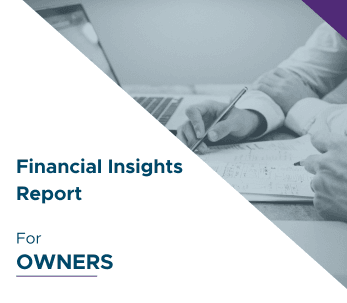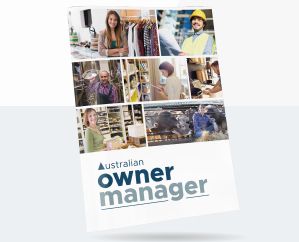Many business owners have been there – you check the books or speak to the accountant, and things look great on paper. The business is profitable, but where is it? Certainly not in the bank account?
This frustrating disconnect between profit and cash flow catches many owners off guard. If you’ve ever struggled to cover costs or invest in growth – even while turning a profit – you’re not alone. This scenario effects businesses large and small.
Managing a business without a clear understanding of cash flow and the impact of financial decisions can quickly lead to a financial hole that simply doesn’t add up.
Let’s start with the basics…
Profit vs. Cash: What’s the Difference?
Profit is a measure of financial performance over time. It tells you whether your revenue is higher than your expenses, but it doesn’t account for when money actually moves in and out of your business (say for assets or liabilities).
Cash flow, on the other hand, is about timing – when money arrives in your account and when it leaves. A business can be profitable on paper but still run into trouble if there’s not enough cash available to cover costs at the right time.
Where Does the Money Go?
Understanding where your profit goes is one of the first steps to managing cash flow effectively. When working with our advisory clients, we always start by assessing their financial position using the Financial Insights Report. This report breaks down where the profit has gone into four key areas:
- Working capital – The money needed to cover day-to-day operations (receivables, payables, stock, current assets and liabilities).
- Owner drawings – What’s taken out of the business for personal use.
- Capital investment / Buying assets – Money reinvested into the business.
- Cash remaining – What’s left after everything else.
By identifying where the profit currently goes, business owners can take steps to realign their finances and make better financial decisions.
Common Cash Flow Traps
Even well-run businesses and especially those that are profitable and growing can fall into cash flow pitfalls. Here are some of the most common causes:
- Slow-Paying Customers – If the speed that money comes in (from customers) is slower than the speed it goes out (paying suppliers and other expenses), you’ll feel the squeeze, especially as you grow the business.
- Growth – Expanding a business often requires upfront investment in stock, staff, or equipment before the revenue catches up.
- High Overheads – A business can turn a modest profit but still struggle if overheads are high and the Gross Profit margin is too low to cover the ongoing working capital requirements.
- Poor Stock Management – Holding too much inventory or work in progress ties up cash that could be used elsewhere.
- Debt Repayments – Loan repayments don’t show up in your profit and loss statement but can take a significant chunk of your available cash.
How to Take Control of Your Cash Flow
Understanding your business’s financials goes beyond looking at the profit and loss statement. Here are some practical steps to improve cash flow:
✅ Track Cash Flow Separately – Profit and cash flow should be monitored independently to avoid surprises. Every business should have a cashflow model.
✅ Shorten Payment Cycles – Encourage faster customer payments by tightening terms, offering incentives for early payment or changing the business model to get paid more regularly.
✅ Forecast Regularly – A rolling cash flow forecast helps anticipate shortfalls before they happen.
✅ Review Costs and Pricing – Ensuring your pricing covers all expenses – including cash flow requirements – can prevent problems down the track.
Bringing Financial Confidence to Business Owners
Many owners and senior managers shy away from finance and just rely on their accountant. But in reality, financial knowledge is one of the most powerful tools for running a business with confidence.
That’s why our Finance for Owners and Managers Masterclass is designed specifically for business owners – giving you practical strategies you can apply immediately. Over two days, you’ll take part in a hands-on financial simulation, learning how to make better financial decisions that drive sustainable business growth.
If you prefer to work one-on-one with an advisor, the Financial Insights Report will analyse the last 2-3 years of your financials and identify exactly your current profitability, cash and capital structure. It’s the first step in helping you pinpoint exactly where to focus for long-term financial success.
If you’re ready to move beyond the cash flow rollercoaster, now’s the time to take control.
Learn more via the links or contact us to discuss how we can help you get financial confidence….









